Business
The Social Determinants of Poverty in Rural areas of Gilgit-Baltistan
Published
3 years agoon
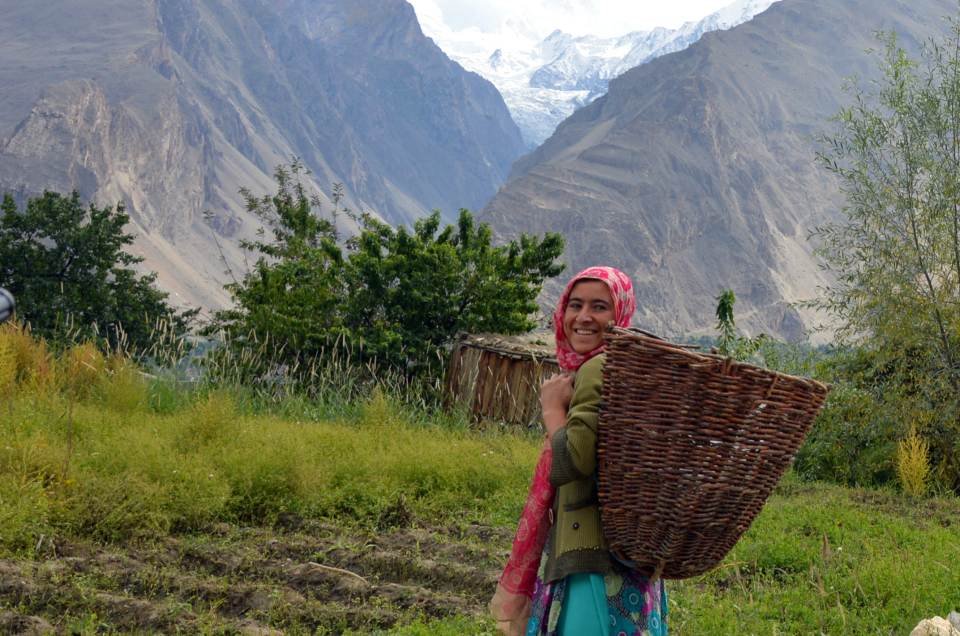
Poverty prevailing in the rural society has a damaging effect on its social fabric. Apart from other serious economic implications, the poverty has social repercussions too. Small disputes arising out of trivial family issues, gradually turn into serious family dissensions, enmity, especially after the division and distribution of inherited properties of joint families in the rural communities. Day today bickerings turn into regular in house fightings and then into litigations leading to perpetual family feuds or enmities. The close blood relations of today turn into arch enemies of tomorrow and the litigation thus started growing into a regular feature of the rural community and this runs for generations and culminates in total destruction of the family not only economically but socially too. This damaging trend has now assumed the status of a virus “God forbid! it may not be Covid-19”. It is high time that sanity comes to the opinion leaders or elders of the rural society before it is too late. This virus has now eaten into the fabric of the society. Healthy curative measures are needed to root out this pandemic. Many countries in the world took the poverty issues of their rural community as a challenge and skilfully turn it into an opportunity for uplifting the population living below the poverty line, through their innovative ideas and constant endeavours.
Constant efforts do produce encouraging results. I remember, some families in our close vicinity and further afield were quite famous in street fighting , brick batting and mud slinging on each other. The young guys of these families were always actively in the arena for wrestling with their neighbours. Most of their valuable time was spent in the police stations and the leisure time in hatching new plans against the neighbours. They were discharging this duty with great devotion and religious fervour. It was but a blessing in disguise that somebody induced them to change their thinking, provided them with some job opportunities and got them engaged in some businesses in our own village. They are now happily engaged in a lucrativebusiness including real estate. The warring neighbours have now become not only close relatives again but intimate friends too. Here it reminds me the old Chinese saying, “Do not teach how to eat the fish but how to catch the fish”, which went 100% correct too in the stated case.
When we observe the history of the world leaders of the recent past like, Mao, Linen, Karl Marx, Khalil Jibran, micro-finance movement of DR. Younus and even French revolution we can realize that all these ideas culminate in redeeming the economic goals of the society.
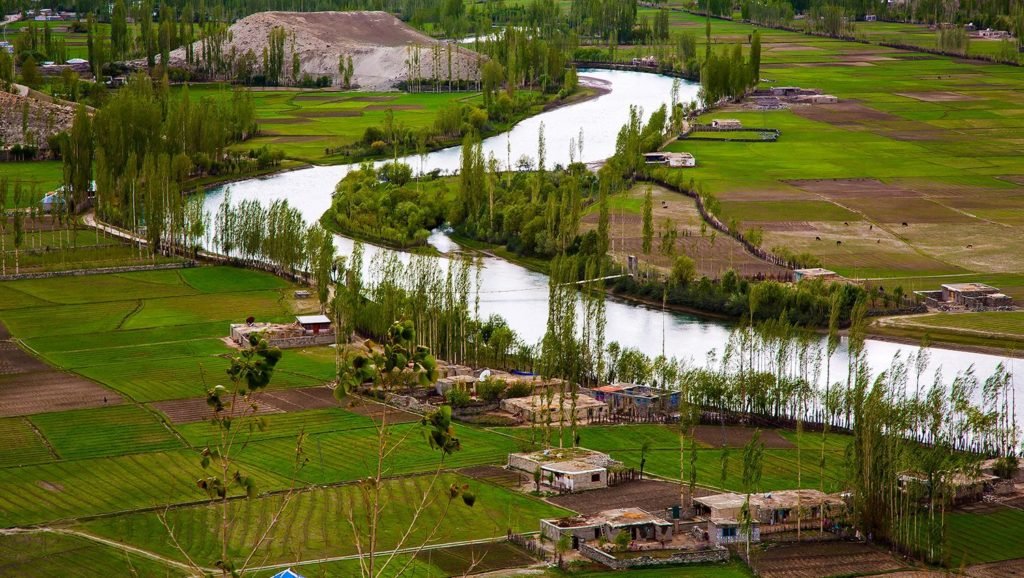
More than 40% of Gilgit-Baltistan’s population is living below the poverty line. In order to nip the evil in the bud, there is a need of paradigm shift in the approach of living patterns of the people in the village and they are re quired to be induced towards agro-based and other income generating activities. The reasons of abject poverty in the rural society could be summarized as under:-
Literacy rate
The literacy rate in the rural area is quite low because they do not have access to quality education either because of financial constraints or lack lustre attitude of the government to provide affordable or free education to the poor masses in the rural areas. Obviously, without having acquired quality education the youth in the rural areas is unable to compete for higher and lucrative job opportunities and consequently they are legging behind in overall developmental activity.
Health care
The rural communities do not have better health facilities as compared to urban area and thus their children are always vulnerable to a number of diseases besides male nutrition problem due to food shortages. They are unable to afford proper medical treatment to their ailing children mainly because of financial constraints. A large segment of the rural society does not have access even to safe drinking water which ultimately results in water borne disease.
Small Land Holding/ Shortage of food
The land holding of the people in the rural area is too small i.e much below the subsistence holding. This land could hardly suffice the food requirements of an average family. So, the rural communities always suffer with food shortages and they are gradually pushed below the poverty line.
Shelter
Adequate housing is basic human requirement to protect themselves both from hot and cold weather conditions besides rain fall etc. The shelter homes in the rural areas of Gilgit-Baltistan are mostly made of mud and rubble and always prone to suffer by natural calamities like heavy rains, tremors and floods. Unless the rural society is provided with proper shelter, there would always be an impending danger of their being exposed to natural calamities.
Lack of credit
Soft loans or interest free credit is considered to be the life blood in improving the economic conditions of poorest of the poor. A number of organizations like AKRSP, IFAD, Micro Finance Banks, GBRSP and Akhuwat are actively working in the area but no considerable head way has been made in this direction so far. At the moment, IFAD, Akhuwat and GBRSP seem to be quite active and making tremendous efforts in providing soft or interest free loans to the poorest segments of the rural community. They are also taking agro based projects on the basis of public-private partnership. These interventions are likely to produce encouraging results in the years ahead. However, the pitiable conditions prevailing in the rural areas demand a holistic approach to address their economic issues in a coherent manner. The Micro Finance Banks working in the region could have played a major role too in this direction but disappointingly their role in disbursement of soft loans has been more of a dormant partner so far. The outreach of the existing MF banks in Gilgit-Baltistan is hardly 5% of the rural population. The area like Darel, Tangir and other remote places of Diamer district have no access to micro financing.
Lack of Awareness
The people in the villages are generally un-aware as to how their earning capacity could be enhanced through optimum use of moveable and immoveable resources at their disposal. There is a need to launch a mass social awareness campaign by NGOs and other developmental organizations in Gilgit-Baltistan. Because these small farmers are still treading on the old beaten track , not willing to accept the change and use their land for diverse crops, adopting value addition methods / techniques and growing demand oriented vegetable etc. These awareness campaigns can bring about a marked improvement in the overall income generating capacity of the people with small means.
Un-employment
Since there is no industry functioning in the rural area, the ratio of un-employment has gone up and resultantly the poor masses have been pushed down the poverty line. Although the rural area is producing delicious fruits abundantly but there are hardly some fruit canning and processing plants. There is need to establish fruit canning and processing plants both by public and private sector.
Recommendations
In the wake of the on going situation, it is quite imperative that some remedial steps are taken both by the government and other developmental organizations, NGOs and MFIs so that the rural communities could be transformed into a prosperous and self-sustained entity of Gilgit-Baltistan. The following measures can be taken conveniently for the economic and social betterment of the rural society:-
- Government should allocate extra funds for establishing more schools and colleges in the rural areas for imparting quality education besides conducting Skill Development programmes.
- Number of hospitals and primary health care units in the rural areas be increased to provide at least basic health care facilities to the masses.
- The existing programme of “IFAD” be extended for another 10 years, so that the agro-based programmes initiated by IFAD in the region may not die in harness. There is a dire need to extend it to the entire region ( even to the remote corners) in a gradual but coherent manner. AKRSP which has almost squeezed its developmental activities, should also contribute actively for the larger benefits of the poor people in rural areas.
- On the other hand, government should increase the amount of GBRSP’s endorsement funds, besides other allocations for carrying small projects on community basis. GBRSP has recently started its micro financing program also. This program is quite beneficial for the poorest of the poor and is likely to produce better results. This programme is basically based on Garameen Model of Bangladesh initiated by DR. Muhammad Younis for poorest of the poor people in Bangladesh.
- Awareness sessions/ training workshops and skill development programmes be initiated at large scale both by GBRSP, IFAD and AKRSP, so that maximum coverage is attained to achieve tangible results in the shortest possible time.
- GBRSP may coordinate its activities, developmental plan with “EHSAS” and other allied organizations working in the field.
- GBRSP/IFAD should also sponsor awareness programmes in Karakoram International University campuses as well as in the colleges.
- There is a need to establish and promote mining industry too. Most of the area of Gilgit-Baltistan is comprised of high plateaus and mountains. These mountains are divided into three mountain ranges, like Himalayas, Karakuram and Hindukush. These mountain ranges contain heavy deposits of valuable minerals including gold, ruby, marble, uranium, molybdenum and other precious metals. A detailed geological survey of the area is yet to be carried out. The federal government has reportedly approve a project of RS 5 billion for this purpose. Once this survey is carried out. Moreover, Government should encourage private parties both local and down country to set up their mining projects in the region on the basis of public private partnership. This would automatically generate a lot of employment in the rural areas besides creating a number of other businesses.
- Similarly, there are a number of scenic beauty places, glaciers, peaks, high mountains, lakes for tourist attraction. Once the crisis of pandemic Covid-19 is over, there are bright prospects of promoting tourism industry on priority basis, so that it could generate employment to the people at their door steps besides earning foreign exchange for the country.
I am confident, if the steps mentioned above are taken in a planned manner, these would certainly produce tangible results and the rural society can be turned into a prosperous and self-sustained entity like in Thailand, Bangladesh and Japan.
About Author
Sher Jehan Mir
The writer is a former caretaker chief minister of Gilgit-Baltistan. He is a seasoned banker and has established Karakoram Cooperative Bank in Gilgit-Baltistan.
You may like
-
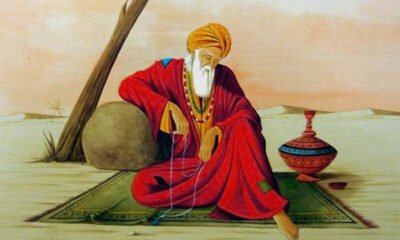

Rumi, the Moral Psychologist
-
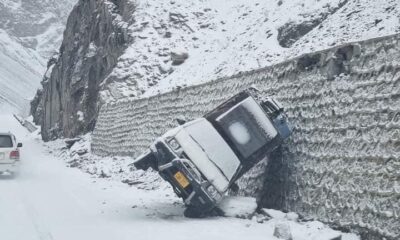

Poor Winter Maintenance of KKH Risks CPEC All-Weather Trade
-
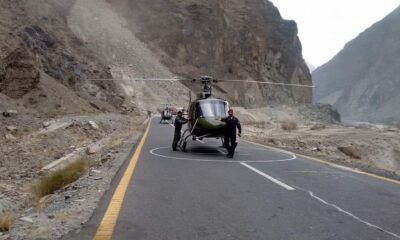

Pakistan Army Launches Rescue Operation, Missing Passengers in Deosai Found Safe
-
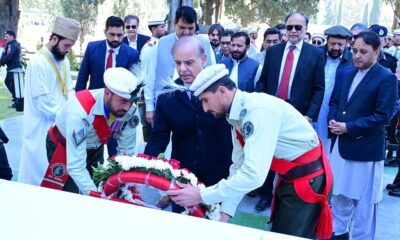

PM Shehbaz Sharif Visits Gilgit-Baltistan, Honors Martyrs, and Launches Development Projects
-
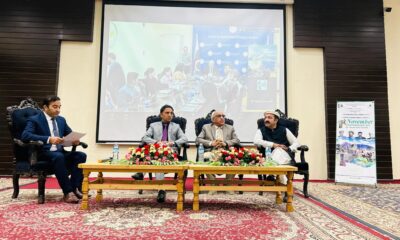

CISS-KIU Seminar: A Tribute to Gilgit-Baltistan’s Freedom Fighters of 1947
-


Gilgit-Baltistan Marks 77th Liberation Day from Dogra Rule
Business
Potential of Gilgit-Baltistan’s Gemstone Industry
Published
3 years agoon
January 27, 2023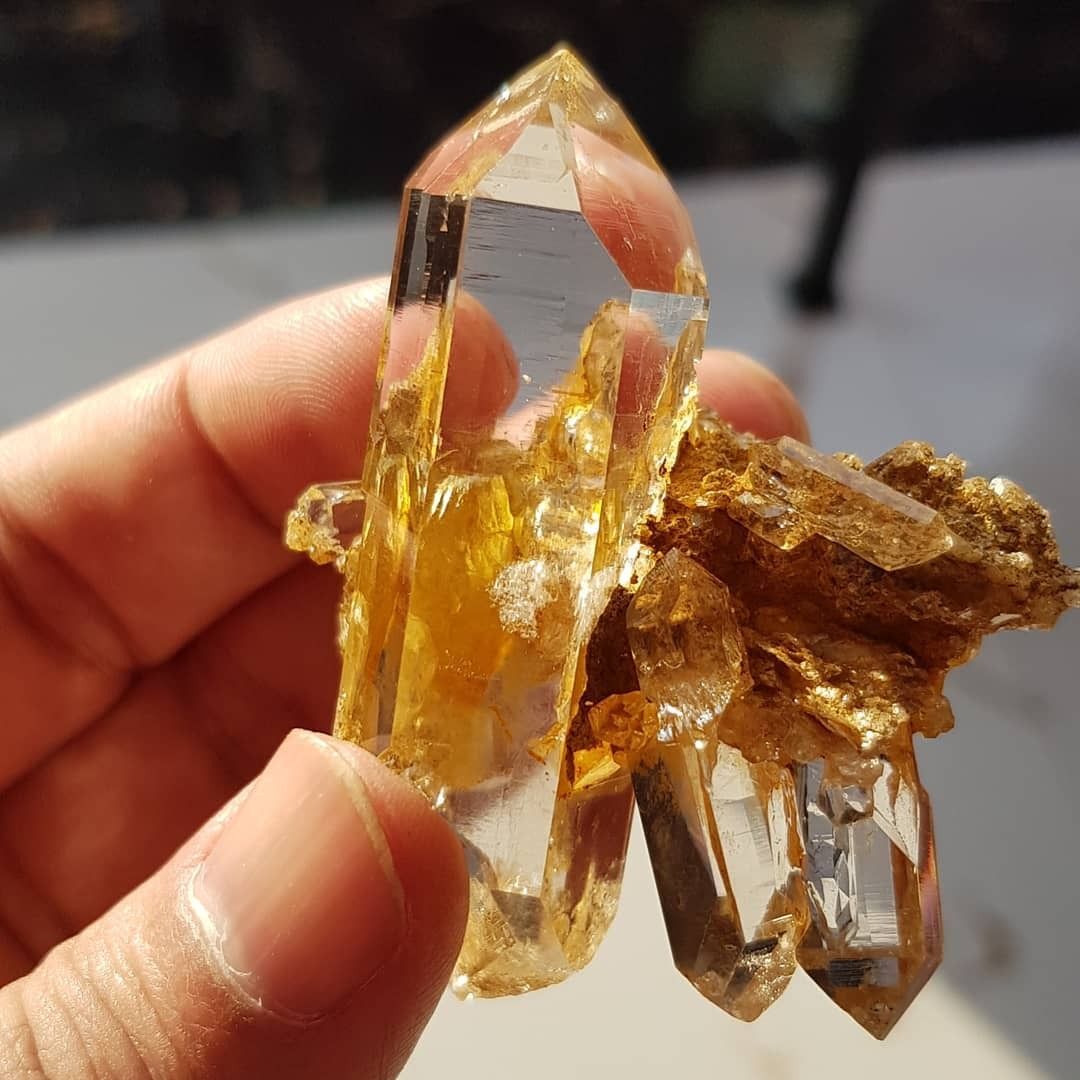
Given the abundance of mineral treasures and other—few discovered and mostly untapped—natural resources in their gigantic mountains and unique terrain, it would not be an exaggeration to call the region of Gilgit-Baltistan a ‘jewel in Pakistan’s crown’.
The Gilgit-Baltistan region, despite being a resource-rich region with an ample amount of minerals and precious stones like marble, gemstones, and numerous other minerals, cannot attain a complete economic dividend due to its remoteness from Pakistan’s center and southern commercial market.

Gemstones of GB found in its various locations, especially areas like Skardu, Haramosh, Nagar, and Hunza, are of export quality and world renowned. Unfortunately, GB’s comprehensive information on its supply of mineral data has not been available lately.
Notwithstanding this, an overview is provided in this report.
GB’s topography is immensely mountainous, making it a suitable region for mineral wealth. This is substantiated by the fact that the world’s second-highest mountain, K2, is located in GB.
As a field geologist, I have attempted to gather some information regarding this that I consider an onus to share with you all. GB is a region that has territorial and geographical importance on the world map for both its diversified culture and distinctive landscape. It is a region where the confluence of the world’s three renowned mountain ranges—the Himalayas, Hindu Kush, and Karakoram —meet.
Topographically, GB is one of the richest regions of the world in terms of natural resources. This is corroborated by the fact that many of its places have been designated as containing gold deposits. Among other resources, metallic and non-metallic metals, precious and semi-precious gemstones of high quality and high monetary value are found in an ample amount here.
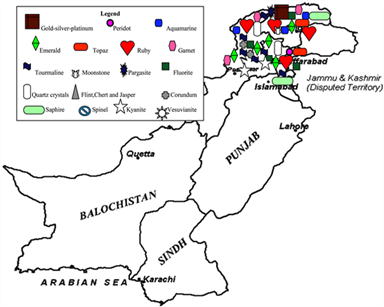
The Map of Pakistan for gemstones and jewelry resources covers regions of GB and AJK as well as some adjoining areas of KPK. The Skardu Division includes Shiger, Israel, Tormiq, Kashmal, Bashu, and Saltoro, that are well-known for producing gemstones. Whereas, Yasin and Gupis Valley are known as potential gemstone-founding areas of District Ghizer in Gilgit Division. Likewise, Hunza, Nagar, and parts of the Diamer Division have constantly attracted investors and businessmen in the stone industry. The Pakistan Gems Corporation was set up to develop this industry, however, due to its poor management and function, it could not bear the desired fruit. Although some other businesses and organizations are operating in this field, Pakistan Gems and Jewelry Development Company (PGJDC) also could not properly harvest and utilize its fullest potential to gain mileage.
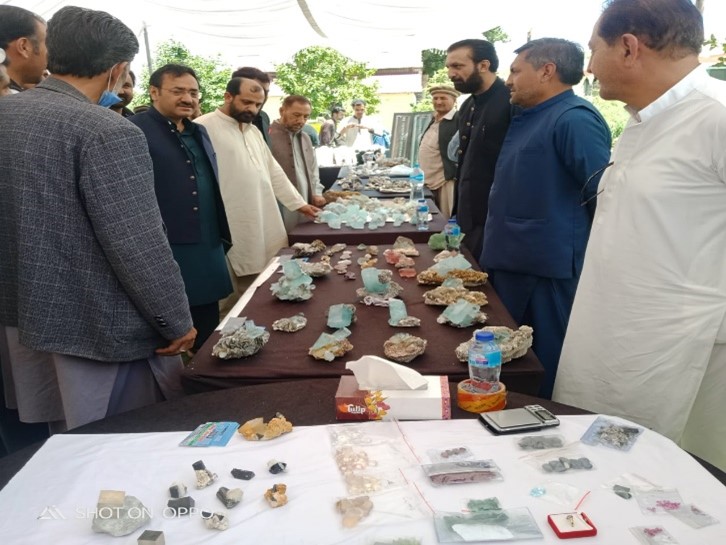
It is heartening that recently, the local government of GB has taken some positive steps to attract foreign traders to the gemstone industry. It has organized two-day events in both Baltistan and Gilgit Divisions pertaining to various gemstones. This was followed by an exhibition in Centaurus Mall Islamabad to draw attention and raise awareness about GB’s rich mineral resources worldwide. Similarly, the opening of the Gemstone Market on Riverview Road beside the twin bridges in City Gilgit is another laudable effort to promote GB’s mineral resources. People of GB are looking towards developed countries like Great Britain with an eye of hope that those countries would take more steps to help promote and develop this local industry of GB and its betterment of this sector with even more generosity.
Speaker GB Assembly, Secretary Mines, and Minerals GB and Director Mines and Minerals visited and observed different gemstone stalls and exhibitions recently organized across GB. Such exhibitions are largely contributing to the development of this sector.
Once, Karachi was the biggest market for gemstones. But now, the shift is towards Peshawer in KPK. Also, PGJDC has been established in major cities like Karachi, Peshawer, Lahore, Quetta, and Muzaffarabad along with Gilgit. The major purpose of PGJDC is to promote gemstone trade in the country. PGJDC asides, other private labs are also available for gemstones identification and testing.
Some areas of KPK which are rich in economic trade gems include FATA, Swat, Dir, Kohistan, Mohmand Agency, Bajaur Agency, Khyber Agency, and North and South Waziristan.

There is some information available about the areas where local miners mine gemstones; the specifics are as follows:
| Sr.No | Gemstones | Mining Area |
| 01 | Aquamarine, topaz , Tourmaline, Apatite, Sphene, morganite and quartz | Skardu, shigar, shengus, stak nala and tormik nala |
| 02 | Apatite, zoisite,rutile quartz, epidote and morganite | Shigar dist. |
| 03 | Aquamarine, emerald, color tourmaline, apatite, morganite, topaz and quartz | Kashmal and yuno (Shigar Area) |
| 04 | Topaz, aquamarine tourmaline, morganite, rare earth minerals, apatite quartz and emerald | Dassu, tahirabad Hyderabad, gyungo (Shigar area Bln) |
| 05 | Tourmaline, garnet, aquamarine , Diopsiode, ruby pargasite,emerald, topaz, amethyst, scheelite and quartz | Baraldu, bashu, and karma (Shigar dist.) |
| 06 | Aquamarine, amethyst, and fine golden rutile quartz | Khapolo, Saltoro near siachen glacier (district Guanche Baltistan) |
| 07 | Topaz,aquamarine,pollucite,rutile,spinel,pargasite and ruby | Hunza, Nagir and Shiger- |
About Author
The Karakoram Magazine
The Karakoram Magazine seeks high-quality, unpublished,nonfiction, first person articles relevant to Gilgit-Baltistan and topics as varied as Geo Strategic & Economic Significance of GB, Arts & Literature, Tourism & Hospitality, Culture and heritage, Education and technology, Health & Wellbeing, Climate Change and Wildlife, Economic & Trade, Sports & Recreations, Youth & Women empowerment and Achievements of Illustrious People of GB in different fields etc.
Business
Magpoondas Special Economic Zone (MSEZ) fruitful for Gilgit-Baltistan
Published
3 years agoon
January 24, 2023
The China-Pakistan economic corridor (CPEC) is a game-changer for the four provinces of Pakistan as well as for the regions of Gilgit-Baltistan and Azad Kashmir. It will become the main connective channel between both states through transport, industry, power energy (electricity), promotion of trade, and tourism. CPEC will be equally important for Central Asia, South Asia, and the Middle East. Under the CPEC, nine economic special zones will be built in different parts of Pakistan. The first economic zones, which will be built in the middle of Gilgit and Skardu city, are called Magpoondas Special Economic Zones. This special economic zone plays a vital role in being peaceful and prosperous in the region of Gilgit-Baltistan. The economic zone created golden opportunities for local people because in G-B region, there are no industries yet. This special economic zone will provide opportunities for increased economic and strategic development. Gilgit-Baltistan is a neighboring region between China and Pakistan. It connects both nations by Karakorum Highway which starts from Khunjerab Pass in the gateway of Gilgit-Baltistan and includes CPEC.
Background of Corridor
China and Pakistan have agreed to build the China-Pakistan Economic Corridor (CPEC), which will connect China’s Kashgar and Pakistan’s Gwadar port through a network of roads, railway tracks, electricity, pipelines, and fiber optics. The CPEC is a significant undertaking that the two countries have completed. The growth of CPEC is extremely significant to both Chinese and Pakistani leaders. During his official visit to Pakistan in May 2013, Chinese Premier Li Keqiang proposed the mega CPEC plan. During President Xi Jinping’s visit to Pakistan in April 2015, both leaders Xi and Nawaz Sharif agreed to promote a 1+ 4 pattern of economic cooperation, with the CPEC playing a central role and four main areas of cooperation, including the Gwadar port, energy market, transportation, and industrial cooperation, in order to achieve win-win outcomes and common growth.
The economic corridor is a plan aimed at bringing regional economies together. It is a 62-billion-dollar initiative that stretches from Kashgar, China, to Gwadar, Pakistan, which involves the development of a 3000-kilometer road network.
Following projects run by this corridor
- Highways and railways, as well as oil and gas pipelines
- Special economic areas in various parts of Pakistan,
- Fiber optic and manufacturing sectors, and
- Electricity projects.
- Nine special economic zones a cross Pakistan
It snakes through the mountains, twists, and turns, up and down ways, and covers 800 KM in (G-B) region. The people of G-B have some apprehensions about the unequal distribution of rights but the government of Pakistan ensures to the people of the region that in this project they will receive equal rights like other provinces. This study intended to provide every aspect of one belt one route concept and its effects particularly on the beautiful northern region of Pakistan. Since the start of the CPEC, China has emerged as Pakistan’s greatest investor, with $8 billion in inflows and $2.1 billion in outsourcing, accounting for 36% of Pakistan’s net investment,” she told conference attendees. She took advantage of the opportunity by highlighting Pakistan’s advantages for overseas investors, including a one-time customs duty exemption and a 10-year income tax vacation for both SEZ developers and businesses.
Geography of Moqpondass:
The special economic zone is around 35 kilometers from Gilgit Airport and 160 kilometers from Skardu Airport. Also, the property is located on Gilgit-Skardu Road, which is four kilometers away from the CPEC route. The Moqpondass is located at The Junction of the World’s three Mountains, Karakorum, Himalayas, And Hindukush; The Magpoondas is Suited in the Vital location among Gilgit, Skardu, and Islamabad. The Special Economic Zones are 457 Kilometers far away from Islamabad, 40 Kilometers far from Gilgit and 160 Kilometers distance from Skardu.
Geographical location of Special economic zone
Magpoondas Special economic zone:
Moqpondass is a proposed priority SEZ in Gilgit Baltistan (G-B), which is surrounded by Afghanistan to the north, China to the northeast, and the Pakistani governed state of Azad Jammu and Kashmir to the south (AJK). The zone is part of the China Pakistan Economic Corridor (CPEC), a huge initiative in which the government has opted to develop nine special economic zones (SEZs) in each of Pakistan’s four provinces, as well as Azad Jammu & Kashmir and Gilgit Baltistan, to boost trade and business. The Moqpondass Special Economic Zone is a successful approach for encouraging commerce, job creation, and economic growth in Gilgit-Baltistan. Moqpondass is a special economic zone being built along China’s western border. The economic zone covers a total of 250 acres and is located in the heart of Skardu, Gilgit.
The following projects will be constructed in the economic zone:
Industrial potential
- Water-Cleaning unit
- A fruit-Processing unit
- A Mineral-processing unit
- A steel-and-Iron unit
- A Marble-processing unit.
- Dry fruit unit
- Forestry
- Gem
- Livestock
- Wood
- Furniture
- Wood carving
- Chipboard, hard board
- Herbs
- Processing
- Medicine production
- Trout fish
- Processing
- Packaging
- Fruits & vegetable
- Processing
- Packaging
- Branding
- Gemstones
- Cutting, faceting
- Polishing
- Branding
- Minerals
- Processing
- Value addition
- Finished products
Iron ore processing, fruit processing, and value addition, steel industry, mineral processing and value addition, leather industry, marble, and granite. The government intends to establish industries in several sectors in the Moqpondass industrial zone, including marble, granite, iron ore processing, fruit processing, steel industry, mineral processing unit, and leather industry. At Magpoondas fruit processing industries, precious Gemstone cutting and polishing center, iron & steel industry would be constructed in future.
Advantages of Moqpondass:
- The special economic zone will create job opportunities for the locales. The region is the water store body for Pakistan; it also produces electricity for other provinces of Pakistan.
- Special areas would operate as a powerful economic encouragement for Pakistan’s government to implement reforms that will strengthen the domestic business climate, productive capability, export base, and commercial appeal for additional international investment.
- The Special economic zones would-be creators of jobs for the country’s massive underemployed population, particularly its rising educated workforce and also locals of Gilgit-Baltistan.
- The special economic zones’ efforts to enhance capacity through vocational and technical training will aid the local workforce in catching up in terms of quality skills.
- Possibility of attracting Pakistani diaspora back to Pakistan with their skills and experience gained while working overseas, as well as their earned cash, for more advantageous opportunities in the country.
- The critical opportunity to improve Pakistan’s technological standing through close collaboration with Chinese enterprises and institutions.
- SEZs would allow for labour pooling, lowering job search costs for workers’ and employers’ and. As a result, reduction in the level of the unemployment talented workers.
- The business zone creates backward links with China’s enormous market and SEZs can help to build a robust and long-term corporate integration through trade and investment.
Main Technical Data of SEZ
- Parking area
- Rescue Service
- Commercial area
- Modern Telecommunication system
- Masjid with green garden and sports area.
- Fuel/gas station
- Weigh bridges , securities, Effluent Treatment plant
- Grid station
- Worker colony.
- Hospital.
- School and Vocational & Technical Training Center
- Administration/government offices.
- Exhibition hall & business centers.
- Hotel, restaurant, mess, etc.
Future master plan of SEZ
Conclusion
The creation of special economic zones will bring peace and prosperity to Gilgit-Baltistan. In the twenty-first century; the era of globalization, the globe has transformed into a village. It has eased everyone to comprehend and interact with one another. The Moqpondass special economic zone plays a critical position in the region at this juncture. It would become simple to communicate with the rest of the world via optical fiber, allowing the locals with rich culture and tourism industry to showcase to the rest of the globe. In the future, it can be possible that train service begins between China and Pakistan, which would be vital for G-B, because the railway track will be starting from China to Gilgit-Gwadar port. With the inception of the special economic zones, modern technologies will be used for cleaning water, fruit processing, mineral extractions, and many other projects.
Muhammad Ismail
The writer is a visiting lecturer in the Department of Politics and International Relations at Karakoram International University, Gilgit.
About Author
The Karakoram Magazine
The Karakoram Magazine seeks high-quality, unpublished,nonfiction, first person articles relevant to Gilgit-Baltistan and topics as varied as Geo Strategic & Economic Significance of GB, Arts & Literature, Tourism & Hospitality, Culture and heritage, Education and technology, Health & Wellbeing, Climate Change and Wildlife, Economic & Trade, Sports & Recreations, Youth & Women empowerment and Achievements of Illustrious People of GB in different fields etc.
Business
The Role of Business Incubation Center, Karakoram International University in Empowering the Youth of Gilgit-Baltistan.
Published
3 years agoon
January 22, 2023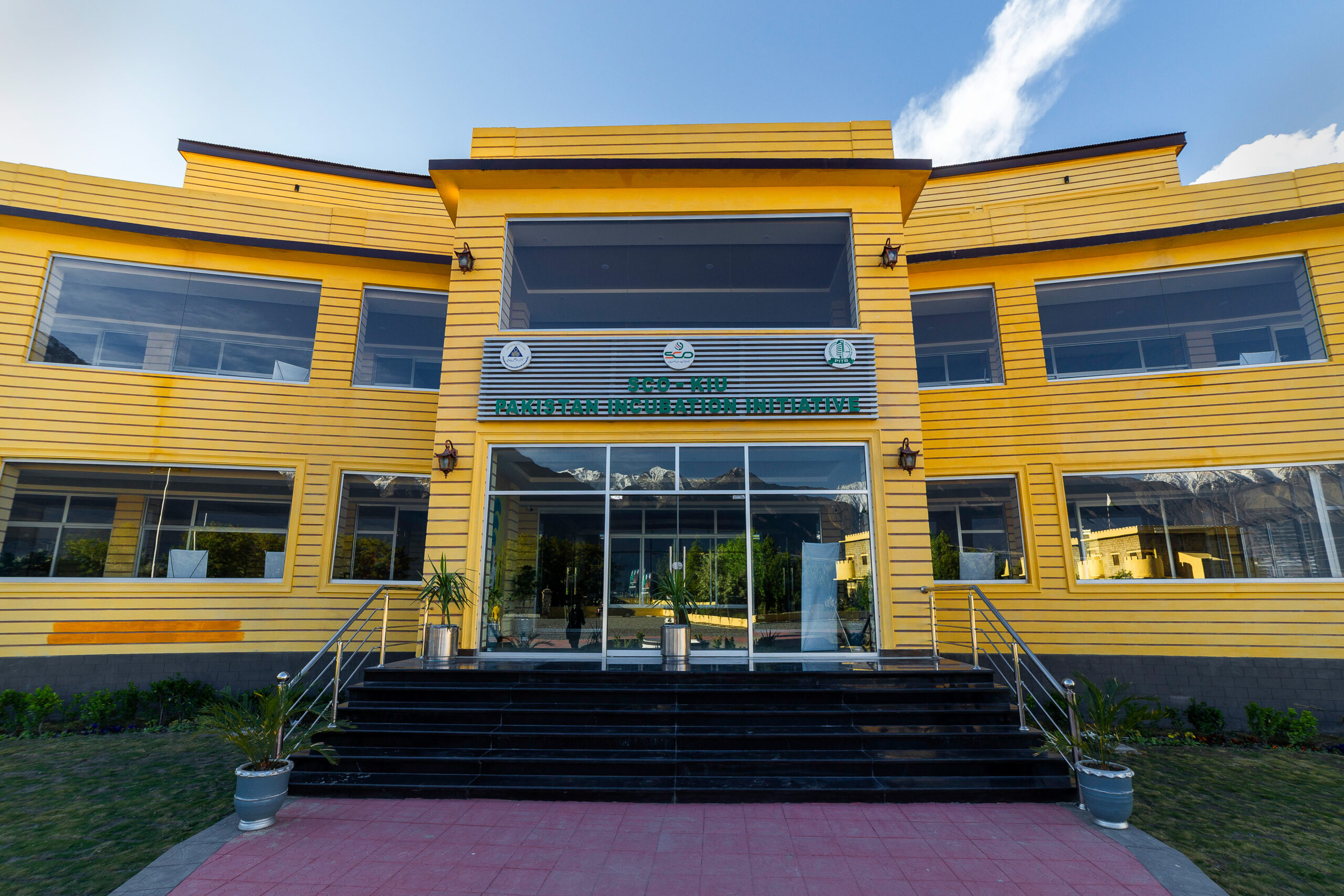
Imagine someone would like to start a business but he is facing several challenges such as shortage of funds, time, skilled personnel, lack of business acumen and a space to work from with ease and peace. It is due to these and similar other challenges that dampen our youth from becoming entrepreneurs and future employers. Consequently, they often knock their selves out to a different corner of job seekers, the number of which is growing exponentially. Yet, very limited job opportunities are available in the existing turbulent economic conditions.
Particularly, in Gilgit-Baltistan – a far plunged area of Pakistan – with no large-scale industries or major economic activities, the youth often look up to the government for employment. It is no wonder that public sector of Gilgit-Baltistan is then the largest employer in the region with more than 1 lakh employees as I write this article, a huge burden on the exchequer.
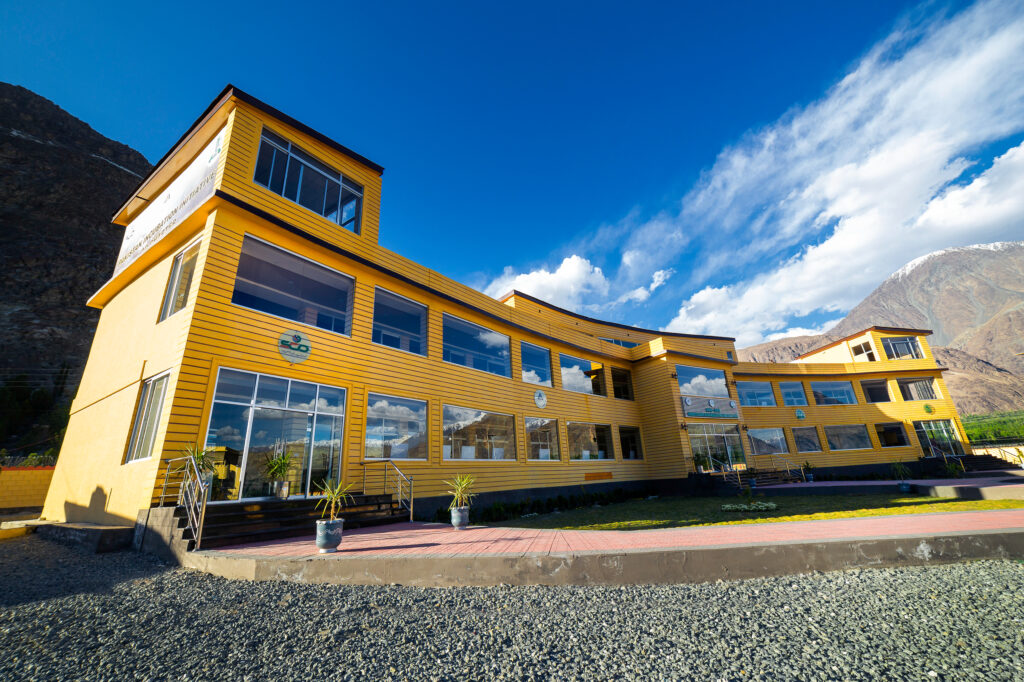
To augment the challenge even further, our society in general and our parents in particular think that success is only achieved if one becomes a doctor or an engineer. Those who are left out from these two fields are expected to pass competitive exams and become bureaucrats. It does not end here. The remaining are expected to have some sort of permanent government jobs (pakki naukri) to be considered successful. Entrepreneurship or starting your own business is not on the menu at all and therefore, it could not pull enough traction in the past. This is a huge bottleneck and culture taboo that needs to be broken if we want to create a sustainable entrepreneurial ecosystem, reduce the pressure on government exchequer and create a thriving economy by making entrepreneurship as a viable alternative career path.
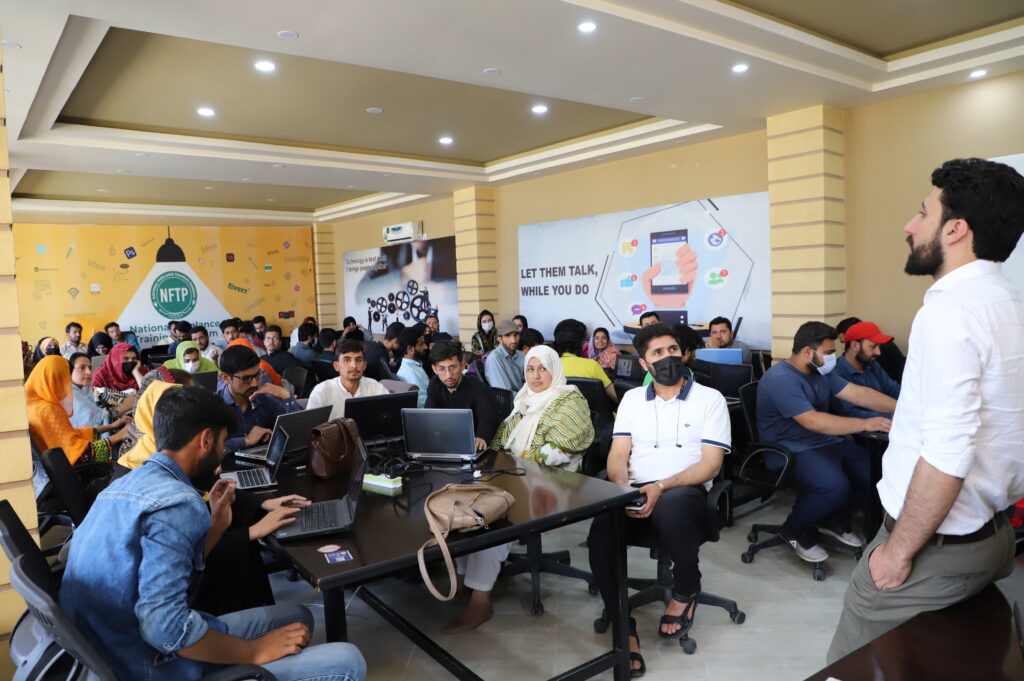
To this backdrop, Karakoram International University (KIU), Gilgit with the help of Higher Education Commission (HEC) of Pakistan embarked upon establishing its first business incubation center (BIC) at its main campus in 2016. The purpose was to provide basic infrastructure and allied facilities for researchers and young entrepreneurs who would like to turn their ideas into reality. Thanks to the financial support from HEC, KIU was initially able to create a small co-working space and a dedicated lab for its students. The co-working space has the capacity to host 8 to 10 people whereas; the dedicated lab has 25 computers with high-speed internet facility for the students, free of cost. Since its inception, KIU-BIC has hosted approximately 50 small business ideas among which, 8 to 10 are successfully running their own businesses. KIU-BIC has conducted numerous awareness and training sessions for 5000+ students and engaged with several partners to create a sustainable entrepreneurial ecosystem in GB.
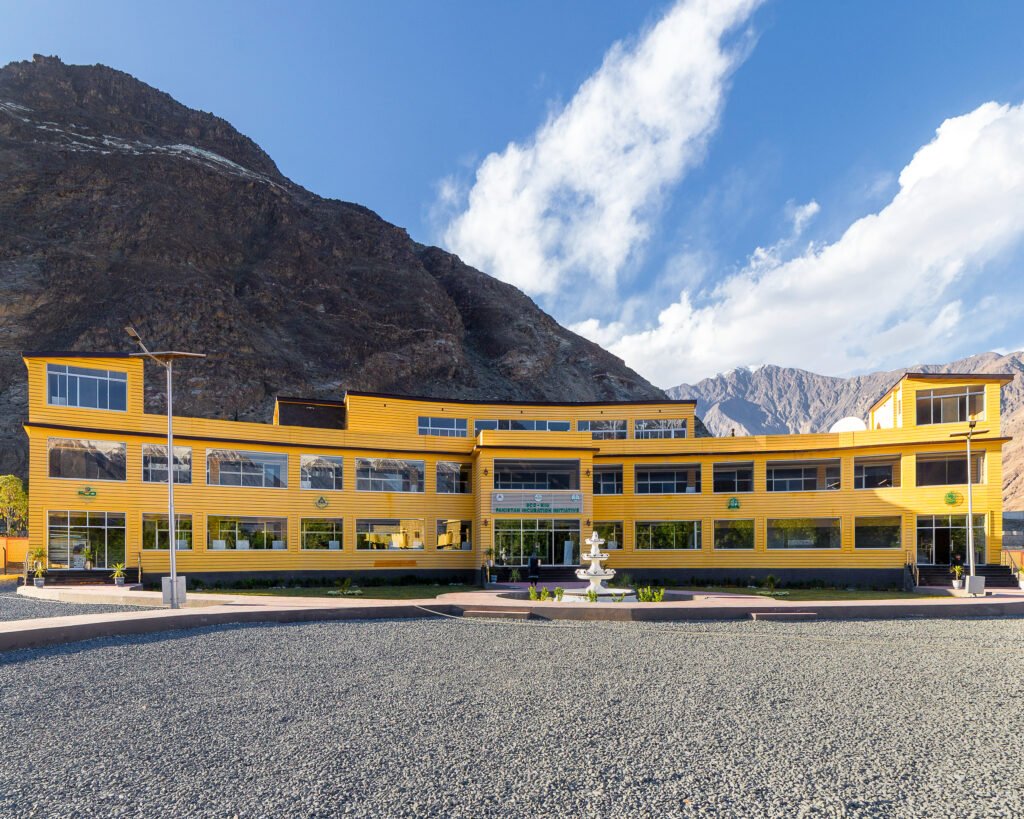
However, I personally believe in extending such facilities and increasing our existing capacities to accommodate even more start-ups. We are lucky enough that the top leadership of KIU also realizes this need and that is why, KIU in collaboration with SCO and Punjab IT Board, has already successfully refurbished a large, dedicated building with the name Pakistan Incubation Initiative which can capacitate more than 100 people at a time. The new location will host at least 20 – 25 startups (15 with our collaborating partners and 10 at KIU-BIC from our own funding) for a 6 months period. Along with our partners, we will provide them free coaching and mentoring sessions on all the challenges that I have mentioned in my starting paragraph. All the start-ups will enjoy non-stop electricity, free co-working space, training, development and networking opportunities with investors, lenders and granting agencies. Among the 15 start-ups, 10 will be paid stipend as well. Every six months, new batches of start-ups will be hosted at KIU-BIC which will accelerate and strengthen our efforts even further.
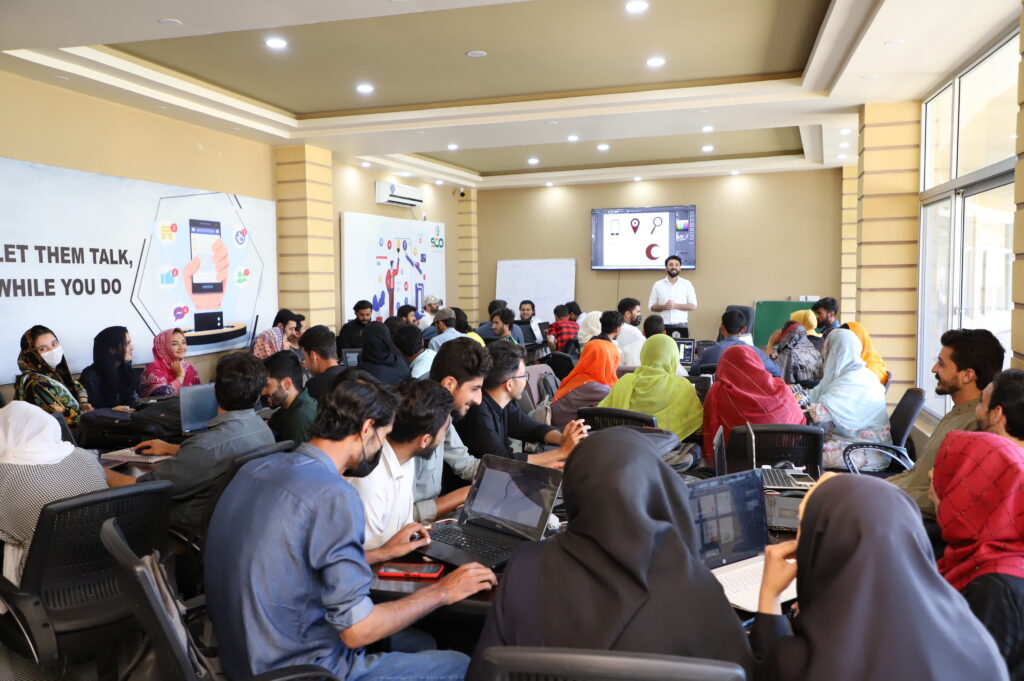
I believe that this is going to be a turning point for the youth of Gilgit-Baltistan and a foundation of a real game changer for the economy of the region. These startups will not only reduce pressure on the government for employment, but it will also kick start a huge economic activity across GB. Resultantly, employment opportunities will be created, and youth will be more empowered.The developed world realized this importance of entrepreneurship and a strong entrepreneurial ecosystem in the late 80s and 90s. In Pakistan, although this realization is not very old, it is better to be late than never. Focusing on promoting entrepreneurship is even more imperative in the context of 4th industrial revolution which is largely driven by technological developments. It is believed that those who could not catch up with the technology and are not well versed with the same will be considered illiterate after a decade or so. KIU-BIC recognizes this fact and is leaving no stone unturned to catch up the bandwagon. I think it is high time for all our youth to pull up their socks and get the most out of the existing opportunities available. I also invite public, private, and not-for-profit organizations to join hands and support us in keeping this momentum on. I am hopeful and very excited for the future of our youth in GB. Together, we shall do wonders, Insha’Allah.
About Author
Dr. Ifzal Ahmad
The writer is the former Director of the Office of Research Innovation and Commercialization at Karakoram International University, Gilgit.

Muhammad Azeem Khan: Pakistan’s Number One Amateur Featherweight MMA Fighter

A Drop for a Click: The Silent Cost of Our Digital Thirst

10 Places to Visit in Hunza – Stunning Natural Wonders You Can’t Miss
Latest
-

 Tourism3 years ago
Tourism3 years ago15 Best Places to Visit in Skardu
-

 Arts, Culture & Heritage2 years ago
Arts, Culture & Heritage2 years agoTraditional women’s dresses of Gilgit-Baltistan
-

 Tourism3 years ago
Tourism3 years agoThe Ultimate Travel Guide to Gilgit-Baltistan: Land of the Mighty Mountains
-

 KIU Corner2 years ago
KIU Corner2 years agoA Guide to LMS KIU Student Login – KIU
-
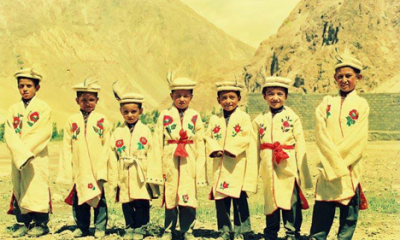
 Arts, Culture & Heritage2 years ago
Arts, Culture & Heritage2 years agoShuqa Simple but amazing winter clothing of Gilgit-Baltistan
-

 KIU Corner2 years ago
KIU Corner2 years agoEmbracing Challenges: Gul Rukhsar’s Remarkable Journey
-
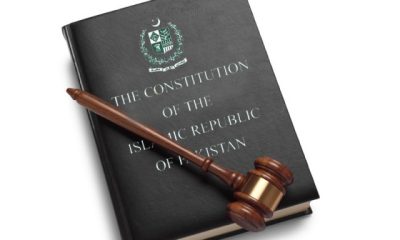
 Opinion3 years ago
Opinion3 years agoThe Constitution of Pakistan: 50 Years of History, Significance, and Challenges
-

 Arts, Culture & Heritage3 years ago
Arts, Culture & Heritage3 years agoQuroot: A Nutritious and Flavorful Staple of Gilgit-Baltistan’s Cuisine


